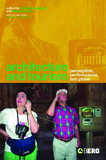| dc.description.abstract | The humanistic and social scientific study of tourism has an intriguing history. The
largest peacetime movement of human beings in human history and a leisure time
activity of the vast majority of academics, tourism, until recently, received rela-tively little analytical attention compared with the rivers of academic ink spilled
over other phenomena of more modest scale. Tourism operators, related business
ventures, and consulting firms, generated a significant literature on how to struc-ture and profit from tourism activities, but usefully critical and analytical perspec-tives have appeared only slowly.
As someone who was an early contributor to the social science literature on this
subject (Greenwood 1972, 1977), three decades ago I was fascinated by the
inattention to a phenomenon that seemed to be overwhelming Europe. It was
perhaps the first time I noticed the ability of so many social scientists to ignore
practices that dominate the world scene while giving meticulous attention to
subjects that only they and their immediate circle of colleagues could possibly care
about.
While the dissociation between the research agendas of the social sciences and
the humanities and the strongest concerns of society at large has itself been
revealed as an historical and political product (Furner 1975; Ross, 1991), tourism
research has had a harder time coming into its own because as academics we are
ourselves inveterate tourists and prefer to be “off duty”when enjoying our leisure
by traveling to see monuments or historical locations and to enjoy good food and
beautiful landscapes. Whatever the cause, despite a variety of interesting efforts
(Smith 1977, 1989; MacCannell 1976, 1999; and The Annals of Tourism Research),
the subject of tourism only began to receive systematic critical attention in the
1990s. The current volume is part of this trend and demonstrates the riches to be
found in the analytical study of tourism.
A diverse and lively group of scholars with a primarily architectural and
historical focus here provides a variety of ways to problematize tourism as a set of
practices to examine, compare, and critique. The chapters display a wealth of
options and approaches demonstrating how rich the topic is and how the study of
tourism immediately moves us beyond tourism itself and into the analysis of many
broader social, historical, and artistic questions. | en_US |

